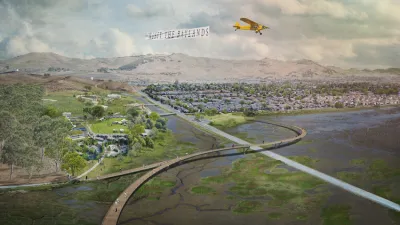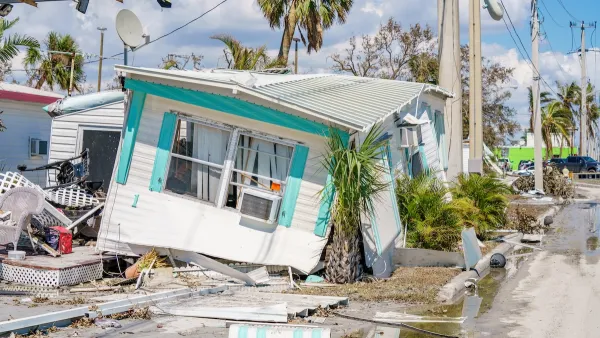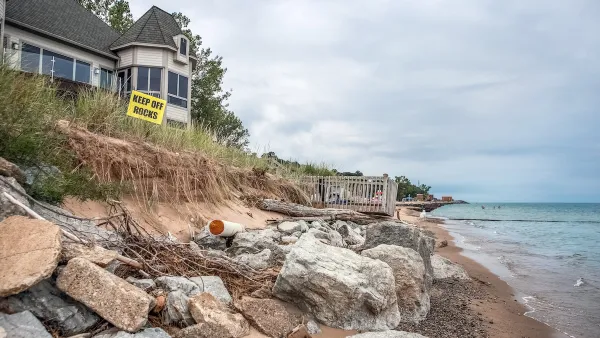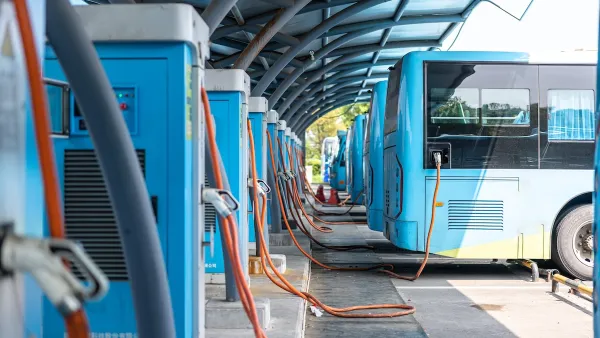A competition in the San Francisco Bay Area highlights projects considering new ways to design for impending environmental changes.

John King reports on the nine finalists of the Resilient by Design | Bay Area Challenge, which brought together teams to develop innovative ways to address sea-level rise and other resiliency threats in the San Francisco Bay Area.
The teams were assigned different sites throughout the Bay Area. For example, one team worked on a plan to get much-needed sediment back into the ecological system of the bay, says King:
Unlocking Alameda Creek is a meticulously researched vision for tapping the potential of the waterway that wends from Niles Canyon down through Fremont, Newark and Union City. Passages now channeled in concrete could be freed to allow fine grains of dirt and sand to be carried once again toward the bay. The new banks could be softened with trees and plants, and there could be seasonal trails and parks within them.
Other projects looked at green infrastructure as a climate adaptation tool, infrastructure and housing investments in low-income communities, and the design of elevated roadways through vulnerable coastal areas.
The nine teams, chosen from 51 entrants, included designers, architects, engineers, and community residents and leaders. Each team received an award of $250,000 to fund a year-long project.
FULL STORY: For a world of rising sea levels, a showcase of proposed solutions

National Parks Layoffs Will Cause Communities to Lose Billions
Thousands of essential park workers were laid off this week, just before the busy spring break season.

Retro-silient?: America’s First “Eco-burb,” The Woodlands Turns 50
A master-planned community north of Houston offers lessons on green infrastructure and resilient design, but falls short of its founder’s lofty affordability and walkability goals.

Delivering for America Plan Will Downgrade Mail Service in at Least 49.5 Percent of Zip Codes
Republican and Democrat lawmakers criticize the plan for its disproportionate negative impact on rural communities.

Test News Post 1
This is a summary

Test News Headline 46
Test for the image on the front page.

Balancing Bombs and Butterflies: How the National Guard Protects a Rare Species
The National Guard at Fort Indiantown Gap uses GIS technology and land management strategies to balance military training with conservation efforts, ensuring the survival of the rare eastern regal fritillary butterfly.
Urban Design for Planners 1: Software Tools
This six-course series explores essential urban design concepts using open source software and equips planners with the tools they need to participate fully in the urban design process.
Planning for Universal Design
Learn the tools for implementing Universal Design in planning regulations.
EMC Planning Group, Inc.
Planetizen
Planetizen
Mpact (formerly Rail~Volution)
Great Falls Development Authority, Inc.
HUDs Office of Policy Development and Research
NYU Wagner Graduate School of Public Service





























